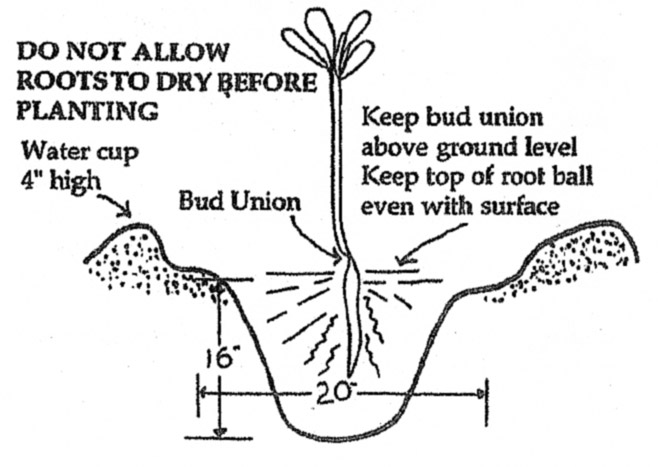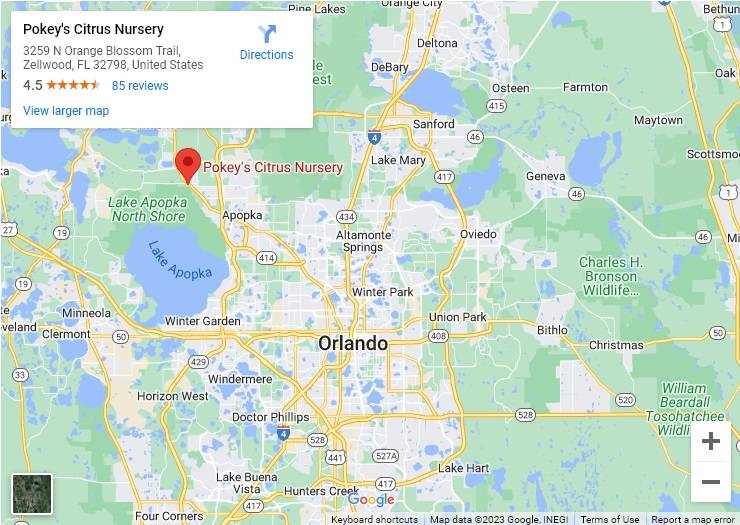| Citrus Tree | Fruiting Season | Comments |
|---|---|---|
| Navel | October – January | Best Florida eating orange. Low acidity & few seeds. |
| Hamlin | October – January | Grown for early season fruiting, very juicy and easy to peel |
| Page | October – February | Extremely sweet fruit with abundant production |
| Valencia | March-June | Use this tree if you plan to juice fruit. |
| Temple | January – March | More acid than other oranges and most desirable flavor. Excellent eating or orange juice. |
| Rhode Red Valencia | March – June | Deeper, richer color than Valencia. Eating or juice orange. |
| Pineapple | December – February | Sweet orange, 2 to 3″. Mid-season orange most widely grown in Florida. Has seeds, excellent eating and juice orange. |
| Midsweet Orange | January – February | Seedless, 3 to 4″. Excellent for eating and juicing. |
| Parson Brown | October – March | Hangs on tree after maturity until April or May. Provides long use for homeowners. Has seeds. Excellent for eating and juice orange. |
| Red Navel | November – January | Inside color is red. Very sweet. Excellent eating or juice orange. |
| Blood Orange | February – April | Red pigment in flesh is dependent upon color or cold night temperatures, being darker in colder areas. Unique sweet flavor. |
Citrus Care Guide
When to Plant:
Containerized citrus trees can be planted anytime throughout the year, as you are transferring the tree, not transplanting it and no shock to the plant is involved.
How to Plant:
Pick a sunny spot, with 50% or more sun, on a well drained soil or soil mix, 15 to 20 feet from house or large trees. Clear away weeds and grass, avoid septic tanks and drain lines. Have water available. Dig hole larger than the container.
To set tree in ground or larger container, remove existing container, shave away fiber roots from the side of root ball (IMPORTANT). Place tree in new hole or container. Fill hole 1/2 with water, then fill remaining soil, to ground level, in the hole. Pack soil to remove air pockets
For planting in the ground, build water cup 4 feet in diameter, 4 inches high, water once or twice weekly. (SEE BELOW)

Cold Weather Care:
To Protect From Frost or Freeze Damage:
If the plant is still in a container, set the plant indoors if there is the possibility of a frost or freeze.
If a freeze is forecast, cover the tree with a sheet or blanket. Covering should be removed when outside temperature reaches 36 degrees or more.
Some leaf droppage can be expected following a freeze, but this should be a temporary situation.
NEVER prune the tree after a hard freeze until the new growth is well underway.
If no new growth appears on the tree by late spring, (May or June), the tree has sustained severe damage.
NOTE: Any new growth below the graft (bud union) will be citrus rootstock and should be removed. (on grafted trees only)
Any new growth above the graft is new flush and is a good sign the trees has survived the freeze and should continue to produce.
Fertilize Schedule
- February – Valentines Day
- May – Mothers Day
- September – Labor Day
- Use citrus fruit tree fertilizer
- Our custom blend fertilizer. 8-4-8 sold / $25.00
Basic Insect Control
- Malathion with oil – Use when new growth is present on your trees. Please follow directions on the pesticide labels.

